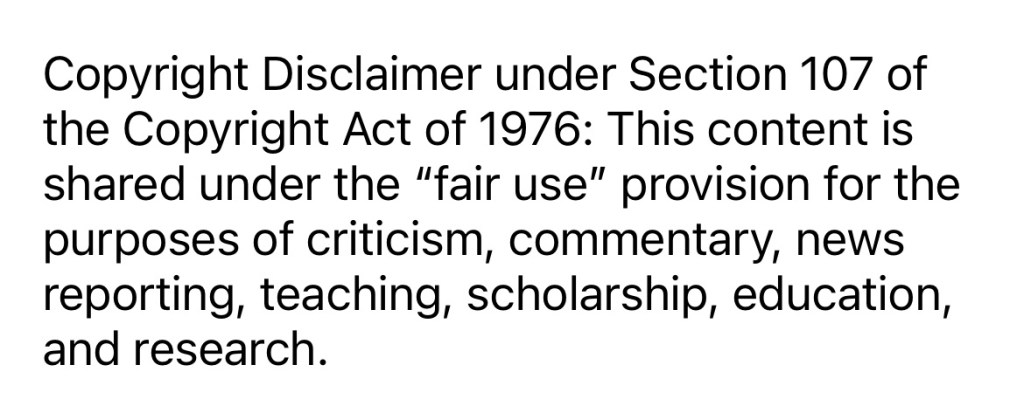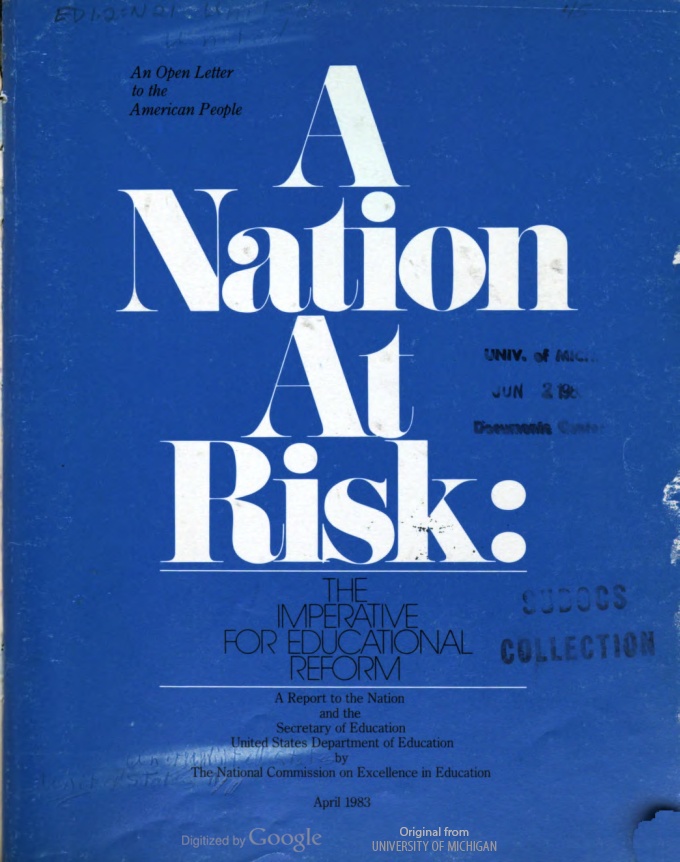Some Big Lies of Education start with politicians (even the biggest of politicians).
“And please abolish that abomination, the Department of Education,” implored Ronald Reagan as he established his goals for the committee charged with producing A Nation at Risk (1983). Reagan sought to shift the public’s support from public schools to school choice as well as, in his misguided words, return prayer to schools.
A Nation at Risk represents two important aspects of US education reform.
First, as noted by several scholars and committee members, the charge of the committee was primarily about partisan politics and not about substantive education reform.
Second, the report established the manufactured “crisis,” which is eagerly perpetuated by mainstream media, as the basis for decades of accountability-based reform that has resulted in an unproductive cycle of crisis/reform that never accomplishes any effective change for students, teachers, public education, or democratic society.
The narrative created by A Nation at Risk has none the less some enduring elements that are uncritically supported by mainstream media (complicit in the Big Lie):
- Educational failure is grounded in the educational system itself, and thus, education reform has been in-school-only reform policies.
- Identifying systemic societal, community, and home influences on measurable student learning is rejected as using poverty/inequity as an “excuse.”
- Teachers are simultaneously the most important factor in education and the agents of failure due to poor training and/or low expectations for marginalized student populations.
- The rhetoric is grounded in crisis/miracle binary and the primary evidence for those claims are standardized tests (mostly state-level accountability testing and NAEP).
- Policies tend to be one-size-fits all solutions to overstated and unsupported problems.
Edling (2015) has identified similar patterns grounded in media rhetoric resulting in education policy internationally:
• Viewing education as being in more or less permanent crisis
• Taking the role as a spokesperson for teachers and on behalf of the field of education
• Excluding the knowledge and experiences of teacher(s), educators and/or educational researchers in the public press
• Simplifying the notion of being a good teacher through stereotypes and dualistic frameworks that overlook task and relational complexity.
Edling, S. (2015). Between curriculum complexity and stereotypes: Exploring stereotypes of teachers and education in media as a question of structural violence. Journal of Curriculum Studies, 47(3), 399-415. https://doi.org/10.1080/00220272.2014.956796
The template established by A Nation at Risk can bee seen in every reform movement since the 1980s, first at the state level and then at the national level with No Child Left Behind (NCLB).
From the standards and testing reforms in the 1980s and 1990s to the charter schools and value-added methods for teacher evaluation under Obama and to today’s “science of reading” (SOR) movement, the essential elements noted above characterize the obsession in the US with crisis/reform in education with no real change ever accomplished.
Ironically, neither the claims of educational crisis nor the reforms proposed throughout the past five decades have been grounded in credible evidence.
A Nation at Risk established the manufactured crisis approach to education reform, which has created only political and market profits for those driving the crisis rhetoric and the reforms.
I recommend the following to understand the essential failure, the Big Lie, of A Nation at Risk as a template for crisis/education reform in the US:
- Berliner, D. C., & Biddle, B. J. (1997). The Manufactured Crisis: Myths, fraud, and the attack on America’s public schools. Longman.
- Bracey, G. W. (2003). April foolishness: The 20th anniversary of A Nation at Risk. Phi Delta Kappan, 84(8), 616-621.
- Edling, S. (2015). Between curriculum complexity and stereotypes: Exploring stereotypes of teachers and education in media as a question of structural violence. Journal of Curriculum Studies, 47(3), 399-415. https://doi.org/10.1080/00220272.2014.956796
- Harvey, J. (2023, May 5). Gaslighting Americans about public schools: The truth about ‘A Nation at Risk.’ The Answer Sheet. The Washington Post. https://www.washingtonpost.com/education/2023/04/26/how-nationatrisk-report-hurt-publicschools/
- Holton, G. (2003, April 25). An insider’s view of “A Nation at Risk” and why it still matters. The Chronicle Review, 49(33), B13.
- Kamenetz, A. (2018, April 29). What ‘A Nation At Risk’ got wrong, and right, about U.S. schools. NPR. https://www.npr.org/sections/ed/2018/04/29/604986823/what-a-nation-at-risk-got-wrong-and-right-about-u-s-schools
- Thomas, P.L. (2015). Ignored under Obama: Word magic, crisis discourse, and utopian expectations. In P. R. Carr & B. J. Porfilio (Eds.), The phenomenon of Obama and the agenda for education: Can hope (still) audaciously trump neoliberalism? (pp. 45-68). Charlotte, NC: Information Age Publishing.
- Forty Years of Failure: When Caricature Drives Education Reform in Post-Truth America



